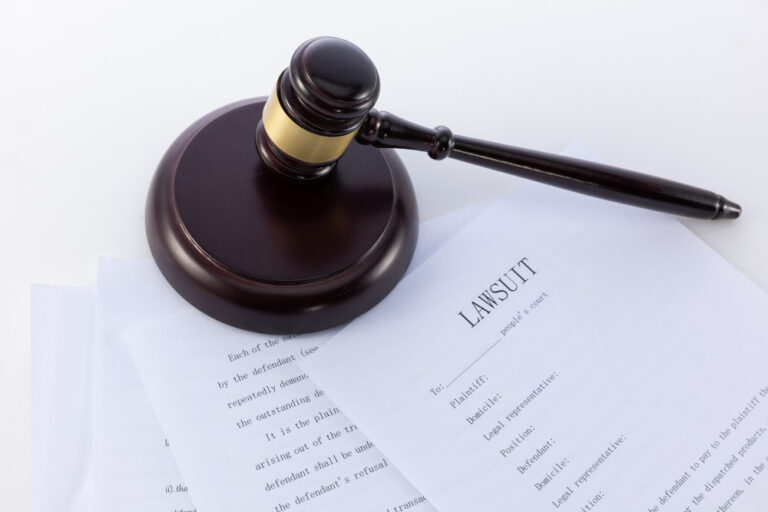Ohio has a law to ensure the insurer takes responsibility for the policyholder’s claim. This Ohio bad faith insurance law will help you fight against the insurer that unreasonably refuses your claim. However, how does it work? Read the article below to learn more about this bad-faith law!
What is Ohio Bad Faith Insurance Law?
Bad faith action means the insurer fails to fulfill duty in good faith for the policyholder. Ohio law orders insurance companies to act objectively in handling the claims of their insured. However, the insurer will be liable for tortious liability if they perform disobedience to this rule.
Ohio court also emphasizes this law in the case of Zoppo v. Homestead Insurance Company (1994). The court states that the insured could take legal action by providing the misconduct of “reasonable justification” of the insurer.
Whenever the insurance handles the insured’s claim, they should perform “reasonable justification” for their action. This “reasonable justification” action includes:
- providing the amount of the policy limits;
- providing adequate defense;
- the adequacy of the insurer’s investigation;
- the openness of communication between the insurer and the insured;
- providing information about the settlement negotiation to the insured;
- the willingness to engage in settlement negotiations; and
- not doing harassing, oppressive, and exploitative conduct.
A Brief History of Ohio Bad Faith Insurance Law
Many bad-faith cases became references for handling other bad-faith cases. However, the case of Donald Zoppo vs Homestead Insurance Company in 1994 is one of the notable cases of bad faith action.
Although it’s not the most influential case, the Zoppo case becomes standard for handling other bad faith cases. Moreover, the Ohio Supreme Court adopted this standard for settling many bad-faith cases for decades.
At the beginning of the Zoppo case, Donald Zoppo claimed that his restaurant and bar got into a fire accident. When he made the claim to the Homestead Insurance Company, the insurer denied the claim. The company argued that Zoppo intentionally burned his own bar for financial motives.
However, the jury at trial did not agree with Homestead. The evidence showed that the insurer did not investigate the claim seriously. As a result, Homestead misinterpreted the investigation and wrongfully denied Zoppo’s claim.
Eventually, Zoppo won the case. The trial court judge awarded him the amount of compensatory damages and punitive damages.
From this case, we could learn that the insurer has to handle the insured’s claim properly. They must inspect all evidence accurately and provide clarity for their investigation.
Moreover, their position is to help their policyholder, not to exploit their vulnerable state. Therefore, the insurer should maintain communication with the insured.
Finally, the insurer must reach the correct decision regarding the claim. Whether the decision means the claim is paid or declined, it must be from a solid investigation.
When Does the Insurance Company Refuse to Take Responsibility?
As stated before, the Ohio bad faith insurance law imposes a “reasonable justification” test as the standard of bad faith cases. The reason is that there are situations where the insurer tends to breach its duty of good faith. Below are the most common causes the bad faith cases.
1. Inadequate Investigation
Inadequate investigation is often the reason for the bad faith cases. For example, in Zoppo’s case, Homestead accused Zoppo of intentionally burning his bar for financial motives.
However, homestead’s investigators only focused on Zoppo as the suspect. They did not consider another possible suspect, for example, the person who threatened to burn the restaurant. Furthermore, the company also overlooked the fact that before the fire accident, there was evidence of robbery and forced entry into the building.
Eventually, the jury concluded that the accident was because of a person who threatened to burn the bar or a random robbery act.
2. Exploitation of Insured’s Weak Situation
When the insured wants to submit their insurance claim, they are often in a vulnerable financial situation. They may be injured, disabled, and have no financial support for themselves or family aside from the insurance benefits.
However, this situation might cause the insurer to impose on the insured’s vulnerable state. As a result, the company will make the insured agree to an unfair settlement.
If you experience this kind of case with your insurance company, consider to talk this with your lawyer. They will assist you in reaching a better settlement.
3. Delay
Delaying the obligation is also an act of avoiding “reasonable justification” in good faith. The insurer must pay the claim promptly for the insured. If not, they might be liable for bad faith.
An example of this case is Veverka v. Prudential Property Casualty Insurance Co. (1983). The insured took legal action against the insurer due to the delay in repairing her car after an accident.
As a result, the insured couldn’t repair her car because Prudential allowed her to apply cannibalized or used parts only. Furthermore, Prudential’s agent pushed the insured to use a particular repair facility for her car.
Types of Ohio Bad Faith Insurance Law
There are two types of bad-faith insurance law. Let’s see this explanation below!
1. First-Party Bad Faith
First-party bad faith refers to the failure of your insurance company to fulfill its duty in good faith. In other words, it means you are dealing with your insurance company for bad faith or unfair settlement.
For instance, you got involved in an accident and asked about the claim to your insurer. However, they gave a wrongful refusal to pay the claim or unreasonably delayed to reimburse it.
2. Third-Party Bad Faith
Third-party bad faith happens when you file a claim regarding someone else’s insurance company. Thus, it means you are not the policyholder. Instead, you take legal action against the at-fault party and their insurer. If the at-fault party’s insurer wrongfully refuses to pay the claim, you may file a lawsuit in third-party bad faith.
There is also another case of third-party bad faith. For instance, you caused damage in an accident and had insurance to cover the damage. However, if your insurer provides compensation that exceeds your policy limit, it may put your personal assets at risk.
If the insurer can’t reasonably explain this case, you may sue your insurance company in a third-party bad faith case.
The Recoverable Damage in Bad Faith Action
Bad faith can cause damages to the plaintiff. Fortunately, you can recover damages if you can win the case. These are the compensation you can gain after winning the case.
1. Compensatory Damage
Compensatory damage aims to recover the plaintiff for their loss. However, Ohio bad faith insurance law requires the plaintiff to prove the misconduct of their insurer. Additionally, the insured must prove that misconduct causes damage or loss for them.
The jury in court is the one who is responsible for deciding the amount of compensatory damages. The compensatory damages may include emotional distress, economic damage, and attorney fees.
2. Punitive Damage
While compensatory damage aims to cover the plaintiff’s loss, punitive damages seek to punish the insurer for its wrongdoings. Nevertheless, the plaintiff must prove the insurer’s misconduct with convincing evidence. The act of misconduct may also include malicious, fraudulent, and oppressive.
Like compensatory damage, the jury in court also decides the amount of punitive damages.
Do You Understand Better About the Ohio Bad Faith Insurance Law?
The Ohio bad faith insurance law ensures that the insured gets what they deserve. It also assures that the insurance company acts in good faith when handling the insured’s claim.
However, if your insurance company’s manager was unfair to your claim, you may consider filing a lawsuit. Consult this case with a competent lawyer. With their knowledge and strategy, they will help you resolve your insurance problem.



